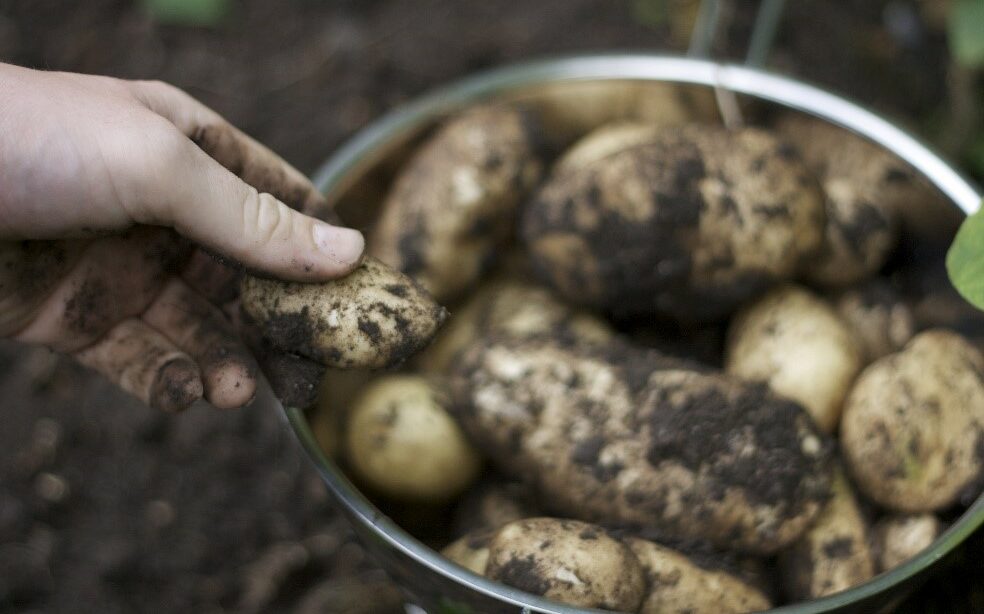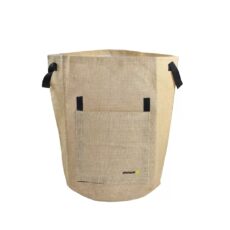Growing your own vegetables can be rewarding and such a satisfying experience and what better way to do it than in a bag? Potato bags offer a convenient and space-efficient method to cultivate this versatile and nutritious vegetable right in your own outdoor space. In this article we will give you a step-by-step guide to how to grow potatoes in a bag from selecting the right variety to harvesting a bountiful crop.
Choosing the Right Potato Variety
Before you begin it is crucial to choose the correct potato variety for bag cultivation. Some of the best options include Charlotte, Pentland and Maris Pipers potatoes. These varieties are well-suited for container gardening due to their compact growth habits and adaptability to different soil types.
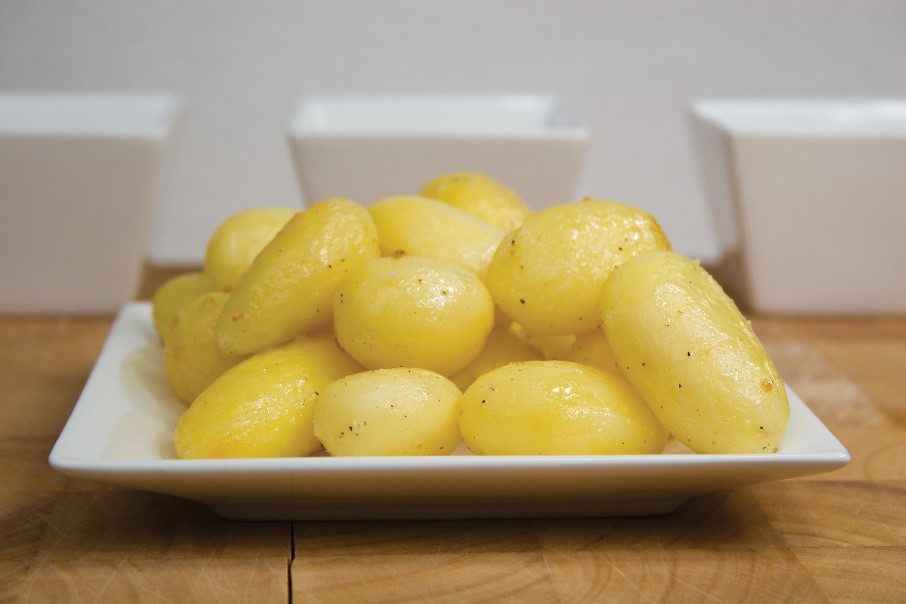
How do you use potato grow bags?
When selecting bags for growing potatoes opt for a sturdy, breathable fabric bag specifically designed for gardening. These bags allow for proper aeration, thus preventing excess moisture build-up that can lead to rot.
What size grow bag for potatoes should be used?
Preferably a bag with a capacity of roughly 90 litres is ideal providing enough space for them to grow. Drainage should be taken into consideration, so ensure the bag is raised above ground to allow excess water to flow out. Also make sure you fill the bag with loose stones in the bottom before adding your well-drained soil.
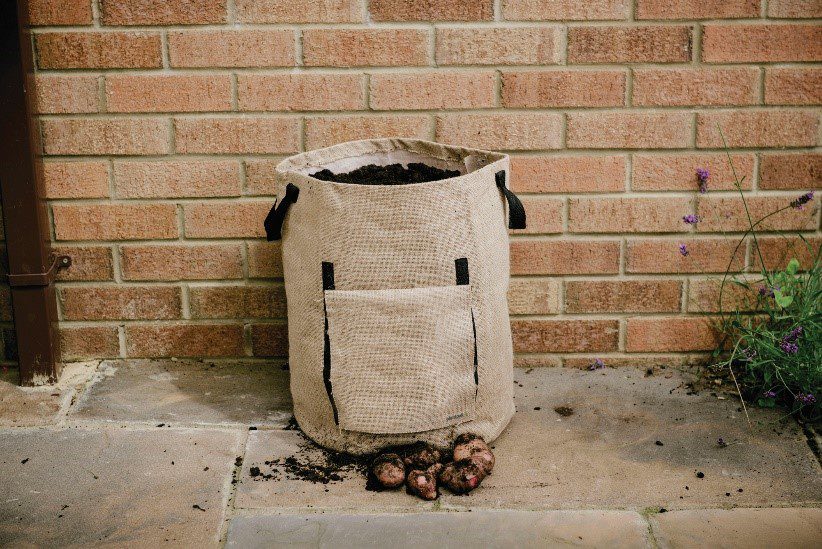
How to Plant the Potatoes in a Grow Bag
Begin the process by selecting healthy and disease-free seed potatoes. Larger potatoes can be cut into pieces, ensuring that each piece contains at least one ‘eye’ (the small indentation from which the sprouts will emerge.) It is best to allow the cut potatoes to air-dry for a day before planting to prevent rotting.
How to Chit Potatoes
Many growers have the added procedure of ‘chitting’ which has been proven to be affective in many varieties. This involves leaving the potatoes in a cool dry area with no direct light, ideally between 10-15°C (50-9°F) with good air circulation, some are known to leave them in egg cartons. Once they start to sprout (2 to 6 weeks) they will be ready for planting. Carefully and gently plant them with the sprouts facing up in well-draining soil with the temperature preferably between 6-8°C (43-46°F).
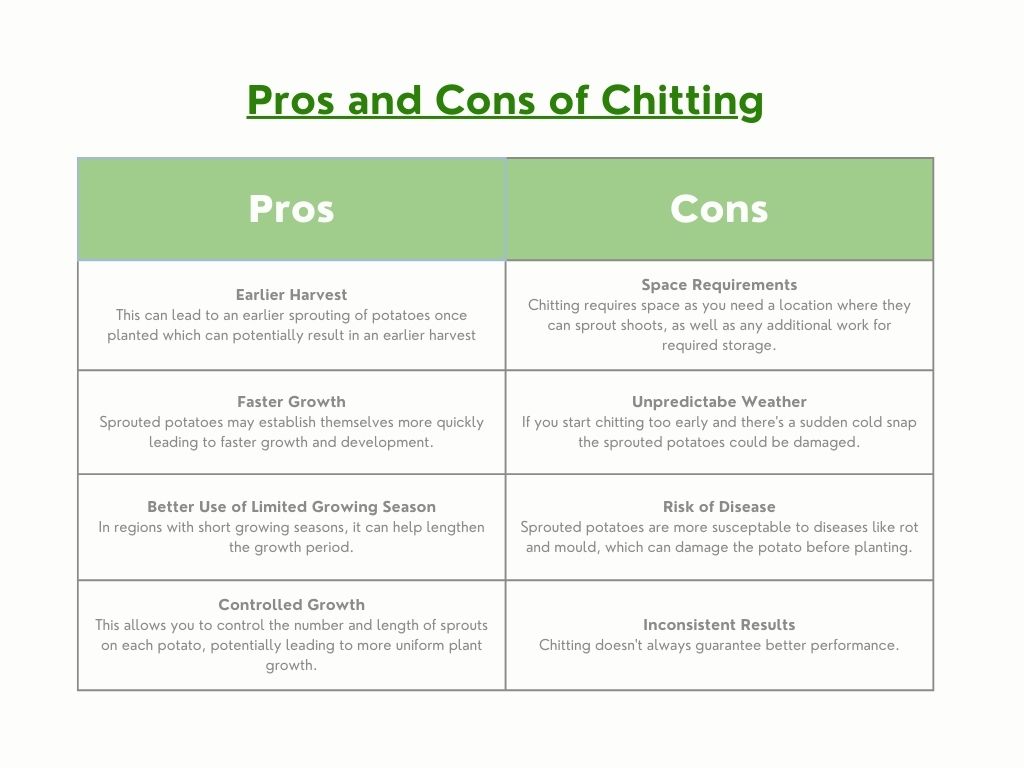
Planting Process
- Fill the bag with a well-draining potting mix, leaving about 4-6 inches of space at the top. A mix of potting soil and compost works well to provide the necessary nutrients.
- Plant the prepared seed potatoes with the eyes facing upward, spaced about 6-8 inches apart in all directions. Cover the potatoes with a few inches of soil.
- Give the planted potatoes a thorough watering to settle the soil. Ensure the soil remains consistently moist but not waterlogged throughout the growing process.
How to Care for Your Potato Plants
- Place the bag in a location that receives at least 6-8 hours of sunlight daily. If you’re short on outdoor space, a sunny patio will suffice.
- As the potato plants grow and reach a height of about 6 inches, start the hilling process: Add more soil to the bag, leaving only the top few inches of the plants exposed. Continue this process every time the plants grow another 6 inches or so. The hilling process promotes increased formation and protects developing potatoes from sunlight which can cause them to turn green and become bitter.
- Regularly feed your potato plants with a balanced, water-soluble fertiliser to provide them with the essential nutrients they need for healthy growth. Follow the manufacturer’s instructions for application.
- Keep an eye out for common potato pests like aphids, Colorado potato beetles and potato leafhoppers. Use natural or organic pest control methods to prevent infestations. Also watch for signs of diseases such as late blight and early blight and promptly remove any infected foliage to prevent spread.
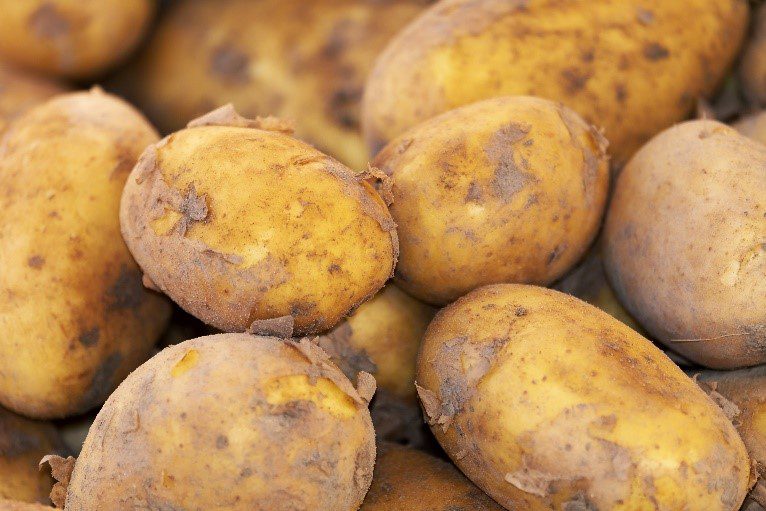
How Long do Potatoes take to grow?
On average they can take anywhere from 70 to 120 days to grow, the growing factors depend on what variety it is, the climate, growing conditions and whether you’re growing them from seed or not.
How to Harvest Potatoes from a grow bag
Potatoes are usually ready for harvest when the plants begin to wilt and flower. Gently dig around the base of the plant and retrieve them as needed. Alternatively, you can wait until the plants start to yellow and die back indicating that the potatoes have reached maturity.
Growing potatoes in a bag is a fantastic way to enjoy fresh and homegrown potatoes, even if you have limited space. With the right variety, care and attention you can successfully cultivate a rewarding potato crop that’s not only delicious but also a source of pride.
What else can you grow in a potato bag?
Because Potato bags are versatile containers we are going to share some other vegetables that you can also grown in them:
- Tomatoes – mainly compact tomato varieties such as cherry and plum.
- Peppers – bell peppers or chili peppers can do well in potato bags as long as they have enough space and sunlight.
- Lettuce – leafy greens like lettuce and spinach are great choices for potato bags, especially if you’re short on garden space.
- Herbs – such as basil, mint, thyme and parsley can successfully grow in potato bags.
- Carrots – as long as it’s the short-rooted varieties which can be grown in deep bags.
- Radishes – a quick-growing choice.
- Cucumbers – compact varieties can be trained to climb a trellis in a potato bag.
- Strawberries – these can be grown in the side pockets of potato bags.
- Onions – grown in potato bags in a controlled environment.


